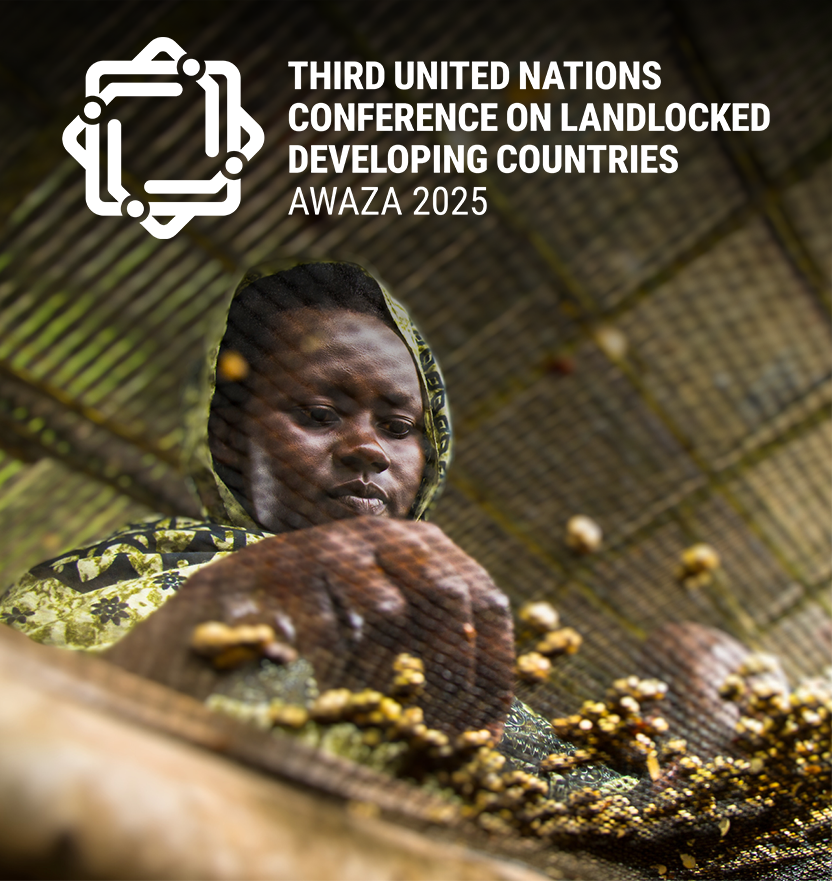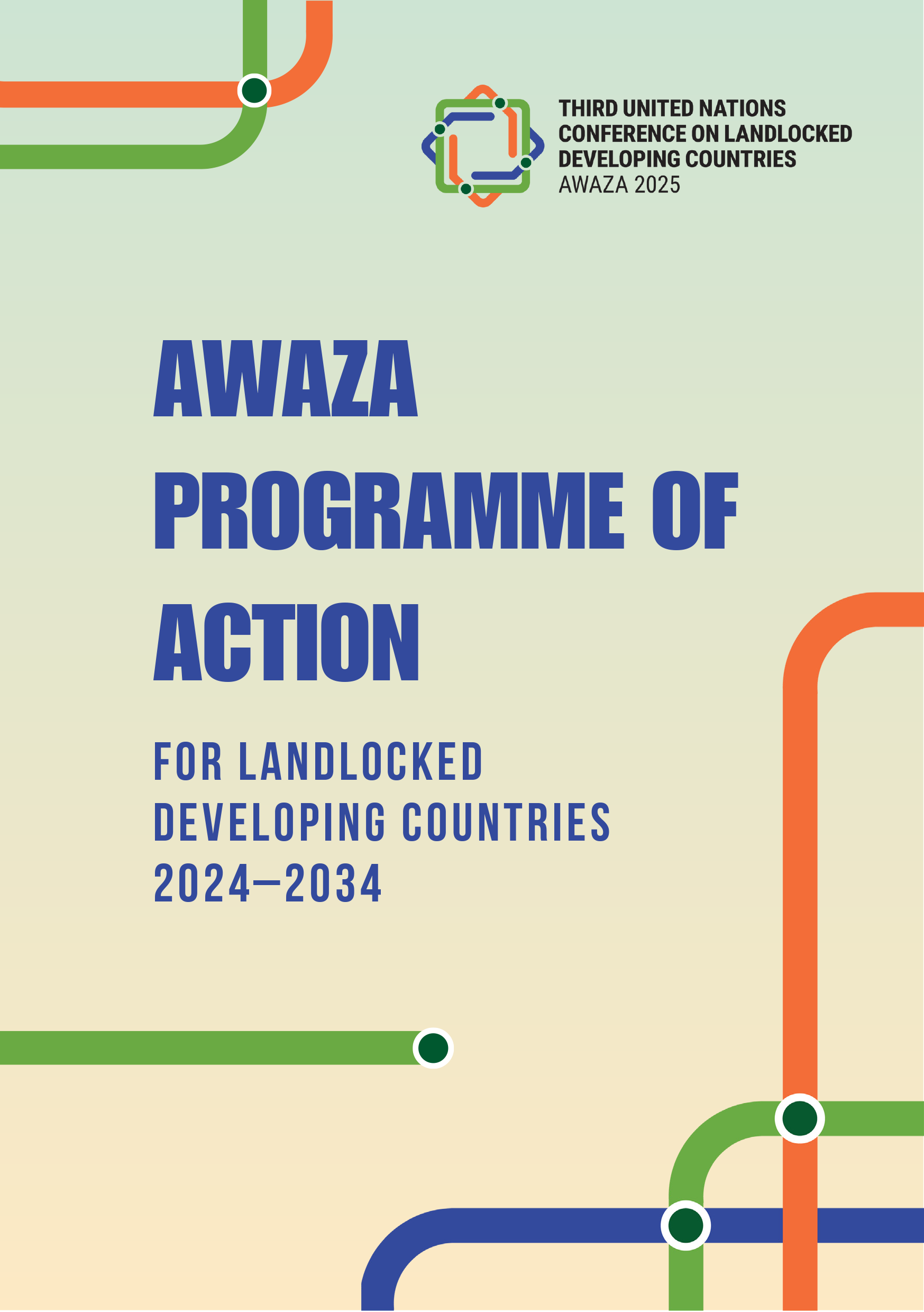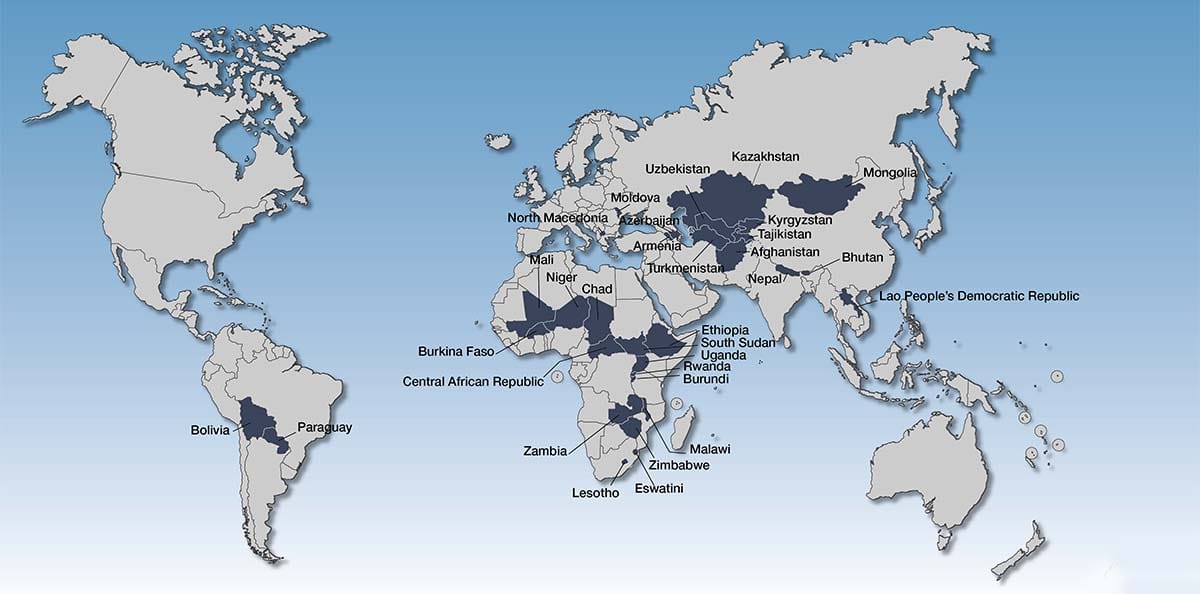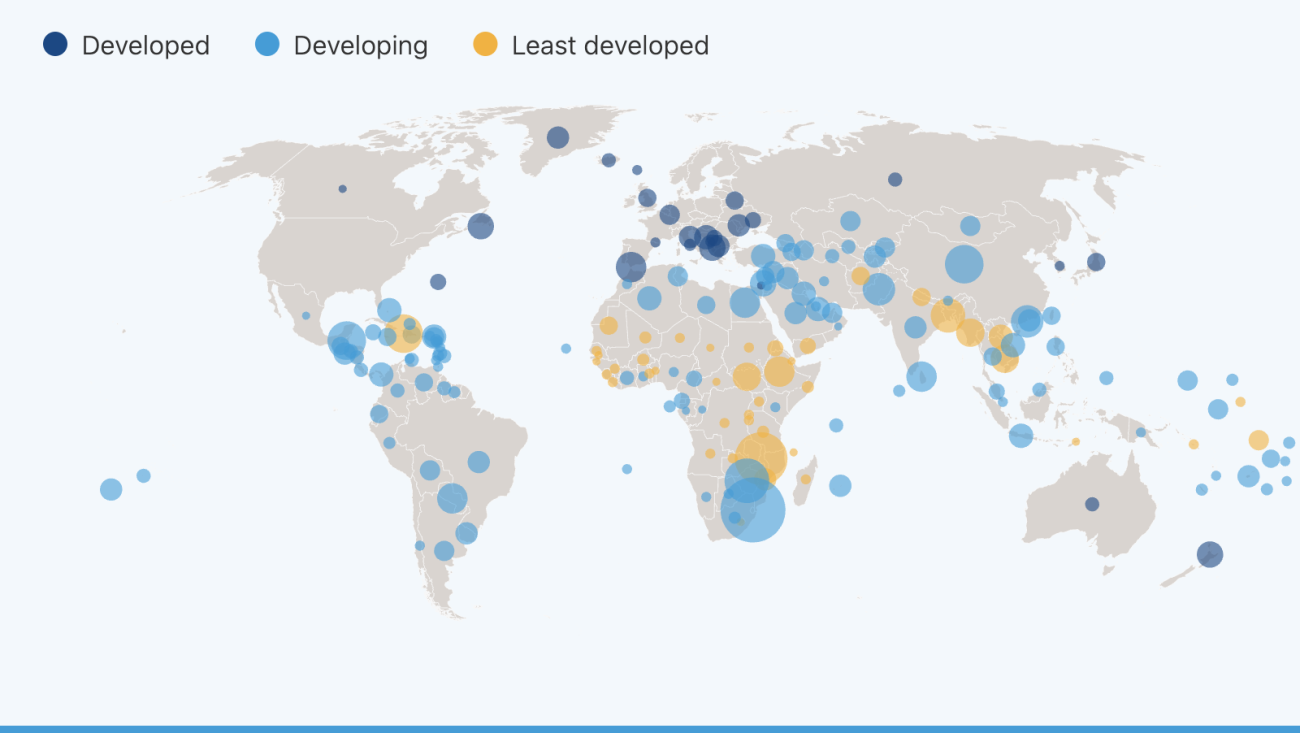32 Landlocked Nations, One Shared Struggle: What LLDC3 Hopes to Solve
The LLDC3 Conference in Awaza, Turkmenistan, has unveiled the Awaza Programme of Action to transform the destiny of 32 landlocked nations.

Written by Lavanya, Intern, Allegedly The News
AWAZA, TURKMENISTAN, August 7, 2025
In the sun-drenched coastal city of Awaza, Turkmenistan, a quiet revolution for over half a billion people just concluded. From August 5 to 8, 2025, the Third United Nations Conference on Landlocked Developing Countries (LLDC3) convened heads of state, development experts, and private sector leaders to confront a stubborn reality: for 32 nations, a simple accident of geography, the absence of a coastline, has translated into a persistent development gap. The conference, a once-in-a-decade event, did more than just highlight the challenges. It produced the Awaza Programme of Action (APoA), a transformative blueprint for the next decade that aims to rewrite the destiny of nations "locked out" from the sea. This investigative report delves into the core issues, the landmark solutions proposed, and the road ahead, revealing how the Awaza conference has positioned itself as a pivotal moment for global equity and economic integration.
The Awaza Agenda: An Investigative Report
Timeline: The conference officially opened on August 5, 2025, in the Awaza National Tourist Zone, a symbolic location on the shores of the Caspian Sea, itself a landlocked body of water. Over four days, a packed agenda unfolded, featuring plenary sessions, five high-level roundtables, and dedicated forums for the private sector, civil society, parliamentarians, and youth. The discussions culminated in the formal adoption of the Awaza Programme of Action (APoA) for the period 2024–2034, which had been previously adopted by the UN General Assembly in December 2024.
Evidence and Data: The 'Distance Penalty' The core challenge for LLDCs is a staggering "distance penalty." The numbers, presented by UNCTAD and World Bank economists at the conference, are stark: landlocked countries pay, on average, transport costs that are 50% higher than the global average. This "cost of being landlocked" is estimated to reduce a country's level of development by 20% compared to its coastal counterparts. Goods can take up to 42 days to import, more than double the time for coastal countries. This crippling lack of competitiveness confines LLDCs to a mere 1.1% of global merchandise trade. The burden is not just financial; it's systemic. In West Africa, for example, a World Bank study found that "facilitation payments" and roadblocks can add 10% to transport overheads, sometimes occurring every 30 kilometers. This institutional inefficiency, rather than poor roads, is a primary driver of high costs and delays.
Expert Quotes and Stakeholder Voices: A powerful narrative emerged from the speeches, shifting the conversation from a story of victimhood to one of proactive solutions.
- UN Secretary-General António Guterres: In his keynote address, Guterres called for a "new chapter" for LLDCs, urging the international community to "break down barriers and restore fairness in global development." He emphasized the need for reforms to the global financial architecture, including more equitable lending practices and debt relief, as LLDCs often pay some of the world’s highest borrowing costs, which can reach up to 2.5 times that of developing coastal nations.
- UNCTAD Secretary-General Rebeca Grynspan: Grynspan highlighted the symbolism of the host nation, stating, "Turkmenistan has proven that when you cannot reach the ocean, you can still create waves of transformation." She underscored that geography "shapes your journey, but it does not define your destination," and pointed to three transformative responses: regional integration, digital transformation, and trade facilitation.
- Youth Entrepreneur Voices: The conference gave a platform to young innovators who are already implementing solutions. Zeinabou Bagayoko, founder of iCodeVillage in Mali, shared how young people are "using technology to create opportunities where none existed before." Similarly, Bilguun Munkhtur, co-founder of Nomaducate, spoke about how the internet is "erasing physical boundaries" in Mongolia, demonstrating the power of digital connectivity.

Case History: Corridors of Opportunity The conference showcased concrete examples of success, proving that cooperation and investment can overcome the distance penalty.
- The Northern Corridor (East Africa): This 1,700-kilometer trade artery connects the port of Mombasa to landlocked nations like Uganda, Rwanda, and Burundi. A decade ago, a border crossing at Malaba could take three days. Today, through harmonized customs procedures and the creation of one-stop border posts, transit time from Mombasa to Kampala has been slashed from 15 days to just 5. This has led to a significant increase in intra-regional trade and boosted the economic inclusion of these LLDCs.
- The Middle Corridor (Central Asia): Leveraging its location, Turkmenistan is a key part of this new route, which has seen transit volumes surge by 150% in a single year. Goods that once took 45 days to travel from China to Europe now make the journey in 20. The Central Asia Regional Economic Cooperation (CAREC) program has mobilized billions in investment to build new highways and infrastructure, reinforcing the region's role as a major transport hub.
The Role of Development Finance Institutions and Global Solutions
A central theme of the APoA is the urgent need to mobilize development finance for projects that turn "landlocked" into "land-linked." The chronic infrastructure deficit in LLDCs is a key bottleneck. Development Finance Institutions (DFIs) are stepping up, as evidenced by announcements at LLDC3. The World Bank, for instance, has several projects underway, including a $500 million investment in a regional transport corridor connecting Burundi to Tanzania, and a multi-phase project in Mongolia to improve road links to its neighbors. The Asian Development Bank (ADB) has invested heavily in Central Asia, supporting projects like the SASEC Road Connectivity Project in Bhutan, which includes the construction of mini dry ports to streamline trade. These dry ports act as inland hubs for customs clearance, reducing port congestion and transit times.
The APoA also emphasizes the need for a dedicated Infrastructure Investment Finance Facility to address the unique financing needs of LLDCs. This facility would aim to de-risk projects, attract private sector capital, and build local capacity to create "bankable" projects.

Implementing the Awaza Vision: A Call to Action
The Awaza Programme of Action is more than just a document; it's a call for concrete steps. Its five key priority areas and flagship initiatives demand a coordinated effort from all stakeholders.
- Structural Transformation: The APoA focuses on diversifying LLDC economies away from their heavy reliance on a few primary commodities. It calls for the establishment of Regional Agricultural Research Hubs to boost food security and value-added exports.
- Trade & Regional Integration: It demands a new WTO Work Programme to prioritize LLDC concerns and a High-Level Panel on Freedom of Transit to enforce fair cross-border movement.
- Transit & Connectivity: The APoA's core focus is on building resilient, multimodal transport networks, including railways, roads, and air links. The goal is to achieve universal broadband access and develop cross-border energy grids.
- Resilience & Climate Action: The program addresses LLDCs' heightened vulnerability to climate change, calling for a dedicated UNFCCC Negotiating Body to secure climate finance and technology for them.
- Implementation & Follow-up: The APoA outlines a robust monitoring framework to ensure commitments are met, marking a significant step toward accountability.
For the international community, this means increased, predictable, and unconditional financial support. For transit countries, it means an unwavering commitment to the principle of "freedom of transit" and continued investment in regional corridors. For LLDCs, it means doubling down on structural reforms, embracing digital transformation, and fostering a private sector-friendly environment.

The Road from Awaza: A Concluding Thought
The Awaza Conference represents a turning point for the world’s landlocked developing countries. By shifting the conversation from a story of geographical disadvantage to one of strategic "land-linking," LLDC3 has provided a new roadmap for sustainable development. The Awaza Programme of Action, with its focus on infrastructure, trade facilitation, and digital innovation, offers a pragmatic and ambitious blueprint for the next decade. The ultimate success of this initiative, however, will depend on more than just political commitments. It requires a unified global effort, from governments and international bodies to the private sector and civil society, to invest in a future where physical borders no longer dictate economic potential. The legacy of Awaza will not be found in its declarations but in the roads, railways, and digital connections that empower nations to turn their landlocked status into a gateway for global prosperity.
Lingering Questions and The Path Forward
Will the proposed Global Infrastructure Investment Facility successfully close the massive financing gaps needed for transformational projects, or will it face the same bureaucratic and funding hurdles as previous initiatives? With the rising trend of deglobalization and protectionism, can the principles of regional integration and free trade, which are so vital to LLDCs, be protected and strengthened?
Sources
This blog draws on key UN documents, including the official website for LLDC3 and the full text of the Awaza Programme of Action. It incorporates insights from speeches by UN leadership and interviews with conference participants, as well as data from UNCTAD and case studies from UNDP, the World Bank, and the Asian Development Bank. UN-OHRLLS - Map of LLDCs, retrieved from UN.org. UN-OHRLLS Publications.




